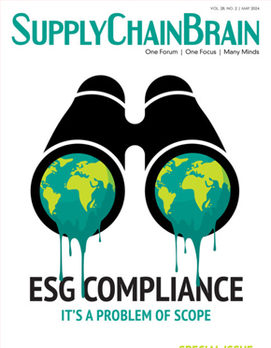
In the 1980s and ‘90s, at the outset of the digital age, every industrial software application was a point solution — a product focused on one specific aspect of the company’s back-office work, such as accounts payable, payroll and taxes. Over time, newer software packages began venturing onto the shop floor as well, where once again each had its own specialty, such as manufacturing planning, maintenance, and compliance reporting.
By the mid-90s, enterprise resource planning (ERP) software packages started becoming available. They integrated business accounting, inventory tracking, purchase cost, and manufacturing planning into a single solution. Their developers continued expanding these functions to include customer relationship management, human resources tracking, supply-chain management, and even product design. By the turn of the 21st Century, a monster had been created, in the form of a monolithic giant that was very expensive and complex to manage and maintain.
A Day of Reckoning
At least in theory, a tightly integrated enterprise software platform can provide users with a variety of important advantages, including a systematic view of operations, reduced training and integration costs, improved accuracy, better security, and easier maintenance. But it soon became clear this vision was one that looked good on paper, but less so in reality. One place where this vision often ran into snags was when ERP systems began expanding capabilities based on poorly digested acquisitions of more specialized companies, frequently resulting in serious integration and version-control issues, combined with a user experience that was deeply unfriendly.
More importantly, this aggregation of companies and service offerings greatly impacted innovation — in fact, it all but stifled it. While the larger companies were devoting significant resources into post-acquisition and integration activities, software innovation from the rest of the industry never stopped. And while some organic growth continued to take place within the ERP giants, much of the more relevant innovation was taking place outside them.
Eventually, the cycle began to repeat, whereby the most promising of the smaller, independent firms would get acquired along with their creations, which then become bolted onto or embedded into the ERP company’s offering. Until that happens, special-purpose solutions often bring with them highly intuitive user interfaces and functional capabilities that legitimately earn them best-of-breed status. All too often, this designation would soon go away, once the indoctrination process was completed post-acquisition.
Tradeoffs of Best-of-Breed
At the same time, there are tradeoffs for adhering to a best-of-breed strategy. For example, there are increased costs associated with supporting multiple packages from different vendors. Issues can arise with integrating data into software packages from other vendors, including increased staff training costs, and possible security risks resulting from multiple sign-ins.
From a management perspective, a popular argument used to offset the performance improvement from a best-in-breed strategy is having “one throat to choke.” In other words, when something goes wrong, it is seen as easier to have just one call to make, at least in theory.
While these misgivings are still valid, the strength of those arguments is declining for multiple reasons. Interfaces have become more standardized with the use of common application programming interfaces (APIs). Data-integration standards have evolved to mitigate the challenge of compatibility. And with the growth of cloud-based solutions, security has become better managed using a single sign-on approach. Lastly, the complexity of how larger software organizations are run has all but eliminated the concept of having just one account team to manage every solution’s support requirements.
The Industry 4.0 movement has significantly narrowed the gap between these two approaches — a reality that the larger, enterprise software providers are quick to downplay and eager to hide. At a minimum, this topic is one worthy of renewed focus and consideration in some important respects. Given all that has changed, especially over the past six months, it demands the question: Which is best for your organization? How can you effectively research and understand what options now exist? And does it really have to be an either/or choice?
Judgment Day Arrives
The answers, we’ve learned, can be found from a no-holds-bared evaluation of your technology’s architecture, conducting a study that is both data-driven and as free as possible of personal or historical bias. That’s not easy, especially considering the deep roots of the political decisions that have led to prior solution selections. But it is possible.
The first step is to establish a separate evaluation team, reinforced by a charter from senior management, to conduct a study and follow it no matter where it leads. Define a timeline. Make it people-driven first, followed by process and then technology. Utilize a RACI model — responsible, accountable, consulted, and informed — to define and clarify roles. Also, recognize that architecture isn’t fixed; over time it will evolve along with your business. And most important, understand that the evaluation results will go a long way toward defining the pathway your company takes to a successful digital transformation.
On a strictly practical level, the choice of either best-of-breed or single-vendor suite carries implications for both the personnel and the skillsets required to use them. A single-vendor approach, for example, will require strong skills in building user-friendly interfaces, something that can be a problem since most suite solutions aren’t as intuitive as best-of-breed applications.
Alternatively, a best-of-breed approach might require the addition of new skillsets to the organization. This can be a disruptive process, but will more likely position an organization for greater resilience and operational flexibility in the future. As we’ve all seen in 2020, the value of this ability has never been greater, nor is it expected to go away soon. The ability to react more quickly in the face of unforeseen changes has become critical for longer-term organizational survival.
Which strategy is best for you? The Lund Institute in Sweden, which has conducted data processing research since the 1970s, examined the issue of multiple system use. It concluded by challenging the established IT mantra which holds that “one is better than many.” The Institute puts it this way: “Fewer is better than many, but one might be too few.” In essence, choosing an operations technology platform built on software that’s best-of-breed for your needs can be a great choice, but only as long as it can also tie into a shared enterprise business and automation platform.
View this conclusion in the same way you manage your supply chain. Would you like just one supplier, or is it best to have a few equally capable providers so as to navigate unexpected issues or surprises?
Regardless of your decision, both enterprise and operational technology architectures must be capable of delivering a far more heightened level of agility across operations and the overall manufacturing enterprise. This is especially the case in today’s COVID-19 environment (and thereafter), where business uncertainty is higher than ever before. In almost all situations, a best-of-breed approach will better position your organization to adapt faster and more effectively. Both the technical skills needed to support a best-of-breed approach, as well as the ability to plug in new best-of-breed solutions that might quickly evolve during today’s coronavirus environment and beyond, could give your company the necessary advantage to react faster, and survive to see another day.
Tom Hennessey is vice president of marketing and business development with iBASEt.


.jpg?height=100&t=1715228265&width=150)



